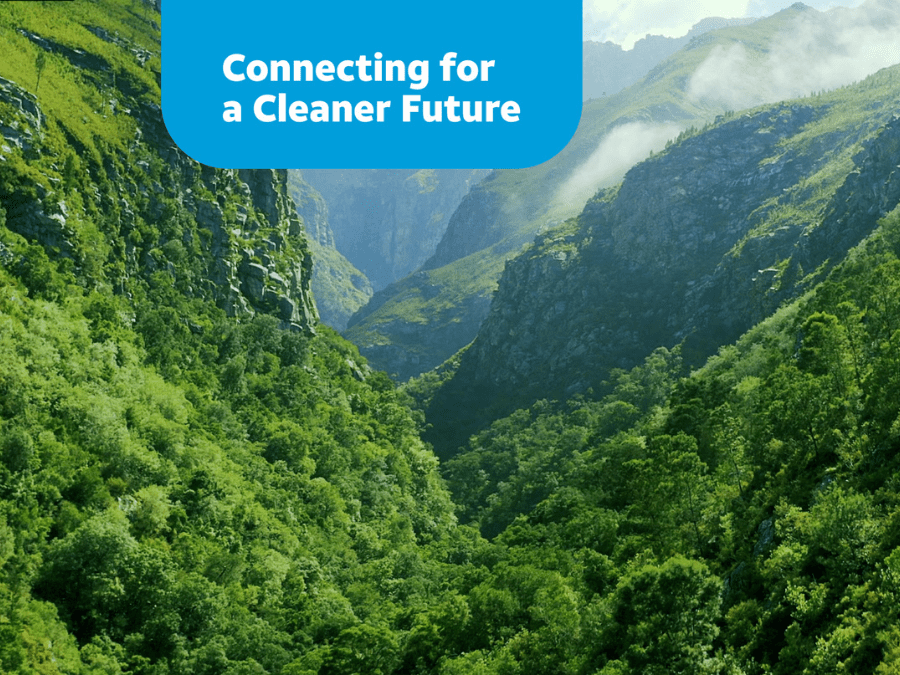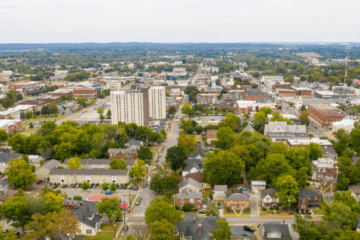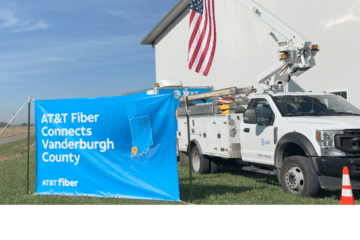At AT&T, connectivity goes much further than connecting our customers – we’re also using it to help lower emissions and curb resource use. Whether it’s through monitoring and controlling equipment on a factory floor to increase energy efficiency or utilizing vehicle use data to create programs that reduce emissions, we are using technology to connect our employees, business collaborators, customers, and communities in pursuit of a cleaner future.
Connectivity can be a powerful tool in the fight against climate change. It enables us to access near real time data to measure the resources that contribute to climate change, like electricity, fuel and water, while also playing an important role in Smart Climate Solutions that help support the transition to a cleaner future, such as electric vehicles, renewable energy and smart buildings. Personally, as I talk with business customers about their efforts to reduce emissions, I’m consistently reminded that they see connectivity as a fundamental component of their strategy to reduce emissions.
Technology must go hand-in-hand with collaboration. By working with other organizations, we’re able to find new Smart Climate Solutions that can increase our impact far beyond our own operations. As part of my role as Director of Sustainability Integration, I’ve seen how organizations can work together through our Connected Climate Initiative (CCI). Through CCI we’re collaborating with technology leaders, business customers, universities and non-profits to find new ways to use our connectivity with the goal of eliminating a gigaton, or a billion metric tons, of greenhouse gas (GHG) emissions by 2035.
Since launching CCI in 2021, we’ve expanded it to include 20 collaborators across various industries – including leaders from tech (Microsoft and Salesforce), energy (Duke Energy and SunPower) and transportation (Geotab and Traxen), to name a few. We’ve helped companies use solutions like 5G and Internet of Things (IoT) connectivity to identify and address production and resource use inefficiencies, reduce their resource use and help meet their climate goals.
Most recently, we announced that Deloitte, a leader in analytics, operations and technology, joined our CCI efforts. Combined with AT&T’s connectivity expertise in fiber, 5G, IoT and edge computing, our collaboration can help businesses develop solutions to simplify emissions data collection to identify opportunities to reduce emissions across their operations. The collaboration aims to improve how organizations share ESG data across a shared ecosystem, while also providing support to suppliers who lack the resources to make the energy transition on their own.
At the end of 2022, we calculated that we had achieved cumulative emissions reductions of 149.2 million metric tons of CO2e, 15% of our overall gigaton goal. We are still at the beginning of our journey and know that we’ll see progress accelerate with the development of new technologies and continued uptake of existing solutions.
By joining forces to co-create Smart Climate Solutions, we’re also fostering climate tech innovations and best practices that have the power to transform the efficiency of entire industries. For example, we’re connecting:
- Agriculture companies like Soiltech to give them precise data on their crops, including moisture, temperature, humidity, location and other impacts, to give farmers a complete picture of their crops’ journey, optimize irrigation, and reduce waste.
- Cities’ infrastructures that use Badger Meter to enable smart water metering that can facilitate preventative maintenance and detect issues earlier.
- Warehouses and shipping yards to reduce excessive idling and congestion.
- Solar systems from SunPower in homes and businesses to maximize energy collection and increase renewable energy reliability.
Our Connected Climate Initiative is just one more way we are connecting for a cleaner future, and I look forward to the impact we’ll continue to make.
Learn more about Smart Climate Solutions and AT&T’s Connected Climate Initiative.




